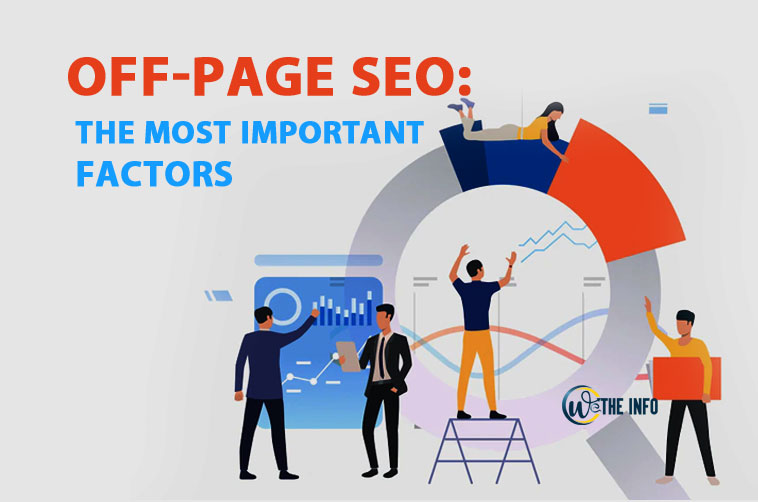On-Page SEO: The Most Important Factors
Welcome to the world of search engine optimization, where the rules are ever-changing, and the competition is fierce. If you want your website to rank on the first page of Google, you need to know the ins and outs of on-page SEO. In this post, we’re going to explore the most important factors you need to consider when optimizing your website for search engines.
First things first, let’s define on-page SEO thanks to James Ewen who works for a consultancy in London, who defines it as the optimization of individual web pages to rank higher and earn more relevant traffic in search engines. On-page SEO involves optimizing both the content and the HTML source code of a page. It’s about making sure that search engines can easily understand what your page is about, and that users have a great experience when they visit your site.
Why is on-page SEO so important, you ask? Well, it’s simple. Search engines like Google use complex algorithms to decide which pages to show in their search results. By optimizing your pages, you’re increasing your chances of ranking higher and being seen by more people. In other words, on-page SEO is crucial for driving organic traffic to your website, especially if it’s a B2B one.
Now that we’ve covered the basics, let’s dive into the most important factors to consider when optimizing your on-page SEO. From quality content to technical optimization and user experience, we’ll cover it all. So, buckle up and get ready to take your SEO game to the next level!
Now that we’ve got the basics covered, let’s dive into the most important factors of on-page SEO. First up, we have content.
On page content
When it comes to on-page SEO, content is king. Your content needs to be high-quality, relevant, and valuable to your target audience. This means that it should be well-researched, well-written, and easy to understand. You should also optimize your content with relevant keywords that your target audience is searching for.
But don’t just stuff your content with keywords – that’s a surefire way to get penalized by search engines. Instead, use them strategically throughout your content in a natural way. Additionally, use headings and subheadings to break up your content and make it easier to read.
Next up, we have internal and external links. Internal links are links that point to other pages on your website, while external links are links that point to other websites. Both types of links are important for on-page SEO.
Internal links help search engines understand the structure of your website and how your pages are connected to each other. They also help to distribute link equity throughout your site, which can help your pages to rank higher in search results. See how that works by reading this post.
External links, on the other hand, help to establish the credibility and authority of your website. By linking to high-quality, relevant websites, you’re telling search engines that your site is a valuable resource in your industry.
Technical SEO
Now, let’s dive into the technical optimization factors of on-page SEO. These factors refer to the optimization of the HTML source code of your web pages. While they might not be as exciting as content, they’re just as important for improving your search engine rankings.
First up, we have URL structure. Your URL should be descriptive, easy to read, and contain your target keyword. This helps search engines understand what your page is about and can improve your chances of ranking higher.
Next, we have title tags and meta descriptions. These are the snippets of text that appear in search engine results, and they play a crucial role in driving clicks to your website. Your title tag should be compelling, accurately reflect the content of your page, and contain your target keyword. Your meta description should provide a brief summary of your page and encourage users to click through to your site.
Image optimization is another important factor of on-page SEO. You should optimize your images by compressing them to reduce their file size and adding alt tags that describe what the image is about. This helps search engines understand what your images are about and can improve your chances of ranking in image search results.
Finally, we have mobile responsiveness. With more and more people using their mobile devices to browse the web, it’s crucial that your website is optimized for mobile. This means that your site should be easy to navigate, load quickly, and be optimized for smaller screens.
Read about: 6 Reasons Why Your SEO Strategy Is Not Working:
User experience
Last but not least, we have the user experience factors of on-page SEO. User experience refers to how easy it is for users to navigate and interact with your website. It’s a crucial factor for both SEO and overall website success.
First up, we have website speed. Your website should load quickly, both on desktop and mobile devices. Slow-loading pages can lead to high bounce rates, which can hurt your search engine rankings. You can improve your website speed by optimizing your images, minimizing HTTP requests, and using a content delivery network (CDN).
Next, we have a website design. Your website should be well-designed, easy to navigate, and visually appealing. A clean, modern design can improve user engagement and reduce bounce rates.
User engagement is another important factor of on-page SEO. You want users to spend as much time as possible on your website, engaging with your content and exploring your pages. This can be improved by providing high-quality content, using internal links to keep users on your site, and encouraging social sharing and comments.
Finally, we have security. Your website should be secure and protected against hacking attempts. A secure website can improve user trust and help to prevent data breaches that can harm your search engine rankings and overall reputation.
Conclusion
In summary, on-page SEO is an important aspect of your website’s overall SEO strategy. By optimizing your content and technical factors, as well as improving the user experience, you can improve your website’s search engine rankings and drive more organic traffic to your site.
However, it’s important to remember that on-page SEO is just one piece of the puzzle. Off-page factors, such as backlinks and social signals, also play a significant role in your website’s overall SEO success.
Additionally, on-page SEO is an ongoing process. You can’t just optimize your website once and expect it to remain optimized forever. As your website evolves, your on-page optimization strategies will need to evolve as well.
So, what are the key takeaways from this article? First, focus on creating high-quality, relevant content that provides value to your audience. Second, optimize your technical factors, such as URL structure, title tags, and image optimization. Third, ensure that your website is mobile-friendly and provides a great user experience. Finally, keep in mind that on-page SEO is an ongoing process that requires continuous attention and optimization.
By following these best practices, you can create a website that’s both user-friendly and search engine-friendly, and drive more organic traffic to your site
This post was created with our nice and easy submission form. Create your post!





